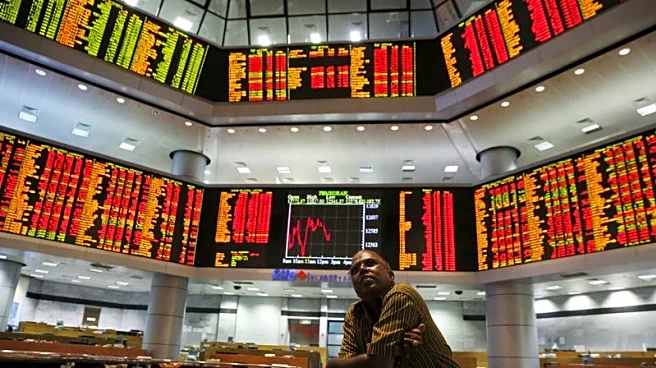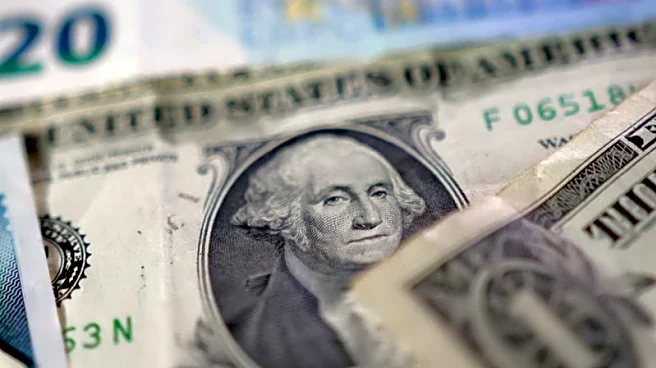What's Happening?
Gulf markets have shown gains as expectations for U.S. Federal Reserve interest rate cuts increase. The labor market report has bolstered these expectations, impacting Gulf markets where currencies are often pegged to the U.S. dollar. Saudi Arabia's benchmark index, TASI, rose by 0.2%, driven by a 0.9% increase in Saudi Aramco and an 8% rise in Saudi Telecom Company. Oil prices, a key factor for Gulf financial markets, also saw an uptick following potential sanctions on Russian crude, despite concerns about market oversupply. Dubai's main share index and Abu Dhabi's index also experienced gains, while Qatar's index saw a slight decline.
Why It's Important?
The anticipation of U.S. interest rate cuts has significant implications for Gulf markets, which are closely tied to the dollar. Lower U.S. interest rates can lead to capital inflows into Gulf economies, boosting market confidence and investment. The rise in oil prices further supports these markets, as oil is a major economic driver in the region. However, the potential for oversupply in the oil market remains a concern, which could temper these gains. The developments in Gulf markets reflect broader global economic trends influenced by U.S. monetary policy.
What's Next?
Gulf markets will continue to respond to U.S. monetary policy signals, particularly any announcements from the Federal Reserve regarding interest rate adjustments. The region's financial markets will also be influenced by oil price movements and geopolitical developments, such as sanctions on Russian crude. The Saudi Capital Market Authority's call for public consultation on opening its stock market to non-resident foreign investors could further impact market dynamics.












